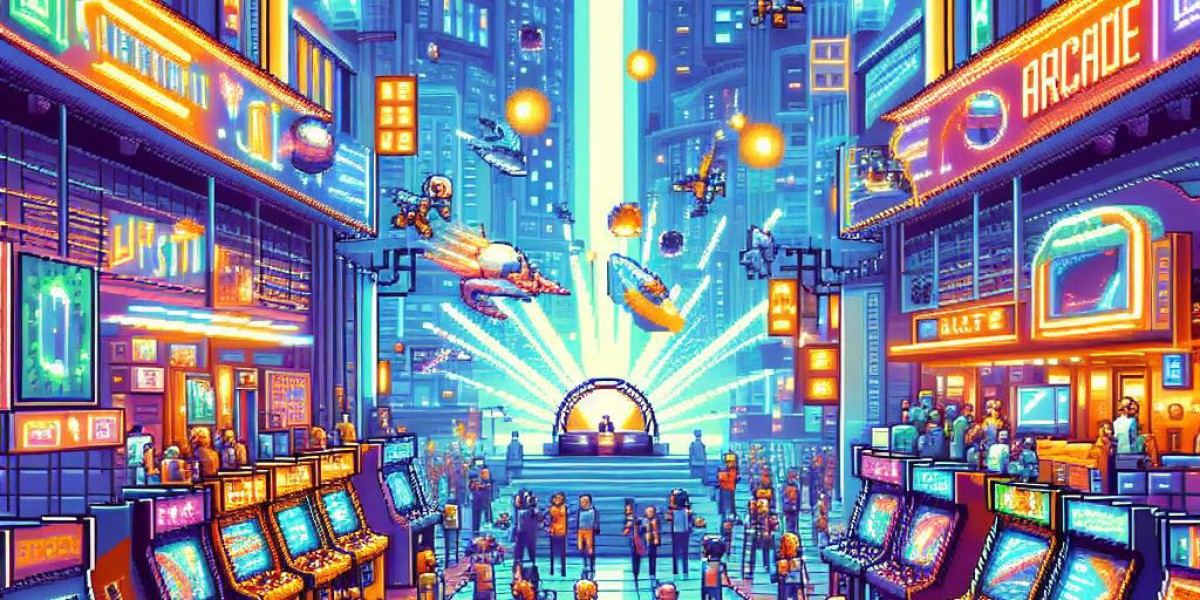The Metaverse is a virtual world that is becoming increasingly popular. It is a digital space where people can interact with each other and with digital objects in a three-dimensional environment. The Metaverse is not just a game, but a new way of experiencing the internet. In this article, we will discuss how to develop 3D arcade games for the Metaverse. We will cover game design, 3D modeling and asset creation, coding and framework development, testing and launch, and future outlook.
Game Design
Game design is an essential aspect of Metaverse game development. It is the process of creating the rules, mechanics, and objectives of a game. 3d game design is crucial in creating engaging gameplay mechanics that keep players coming back for more. Here are some key considerations for designing 3D arcade games for the Metaverse:
- Gameplay Mechanics: The gameplay mechanics of a game are the rules that govern how the game is played. In 3D arcade games for the Metaverse, the gameplay mechanics should be simple and intuitive, so that players can quickly understand how to play the game.
- Objectives: The objectives of a game are the goals that players must achieve to win the game. In 3D arcade games for the Metaverse, the objectives should be challenging but achievable, so that players feel a sense of accomplishment when they win.
- Visual Design: The visual design of a game is the way the game looks. In 3D arcade games for the Metaverse, the visual design should be bright, colorful, and eye-catching, so that players are drawn to the game.
3D Modeling and Asset Creation
3D modeling and asset creation form the backbone of any Metaverse game development project. These elements are pivotal in shaping the immersive and visually appealing experiences within the virtual worlds of the Metaverse. Here's an in-depth look at the key considerations for 3D modeling and asset creation in the context of Metaverse games:
Tools and Software:
- Blender: Blender is an open-source 3D creation suite that supports the entire 3D pipeline, including modeling, rigging, animation, simulation, rendering, compositing, and motion tracking.
- Maya: Autodesk Maya is a popular 3D computer graphics application that offers a comprehensive set of tools for 3D modeling, animation, simulation, and rendering.
- 3DS Max: Developed by Autodesk, 3DS Max is widely used for 3D modeling, animation, rendering, and visualization. It’s known for its robust modeling capabilities.
Best Practices:
- High-Resolution Textures: Using high-resolution textures enhances the visual fidelity of 3D models, providing intricate details that make the assets look realistic and engaging.
- Optimizing Polygon Count: Maintaining an optimal polygon count is crucial for real-time rendering in Metaverse environments. High-polygon models can significantly impact performance, leading to lag and reduced user experience.
- Efficient UV Mapping: Proper UV mapping ensures that textures are applied accurately to 3D models, preventing distortion and ensuring that the textures look seamless in the game.
- Rigging and Animation: For character models, rigging and animation are essential. Rigging involves creating a digital skeleton (bones) that allows for realistic movement, while animation brings characters and objects to life within the game world.
Coding and Framework Development
Coding and framework development are essential aspects of Metaverse game development. They involve writing the code that makes the game work and creating the framework that the game runs on. Here are some key considerations for coding and framework development for Metaverse game development:
- Efficiency: The code for 3D arcade games for the Metaverse should be efficient and scalable, so that the game runs smoothly on a variety of devices.
- Frameworks: There are many frameworks available for Metaverse game development. Some popular frameworks include Unity and Unreal Engine.
Testing and Launch
Testing and launch are essential aspects of Metaverse game development. They involve testing the game to ensure that it works correctly and launching the game to the public. Here are some key considerations for testing and launch for Metaverse game development:
- Testing: Testing is essential to ensure that the game works correctly. It is important to test the game on a variety of devices to ensure that it runs smoothly.
- Launch: Launching a Metaverse game requires careful planning and execution. It is important to create a marketing plan to promote the game and to ensure that the game is available on a variety of platforms.
Future Outlook
The Metaverse is a new and exciting way to experience the internet, and 3D arcade games are an essential part of this experience. As the Metaverse continues to grow in popularity, there will be many opportunities for arcade game companies to create engaging and immersive games for this new digital world. According to, the Metaverse will allow people to explore virtual 3D spaces where they can socialize, learn, collaborate, and play. The Metaverse provides new ways to connect and share experiences, and it will be built by everyone, with creative ideas and practical applications being developed every day by all sorts of people.
Conclusion
In the ever-expanding universe of the Metaverse, the development of 3D arcade games not only stands as a testament to human ingenuity but also represents a remarkable fusion of technology and artistic vision. It transcends the boundaries of traditional gaming, evolving into an immersive realm where players don't just play but actively shape the narrative of their digital existence. This transformative process is not merely about crafting games; it's about constructing entire worlds from scratch, where every line of code is a stroke on a digital canvas, and every meticulously designed asset is a building block in the creation of parallel realities.



